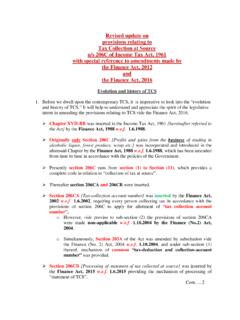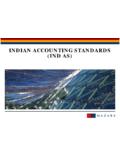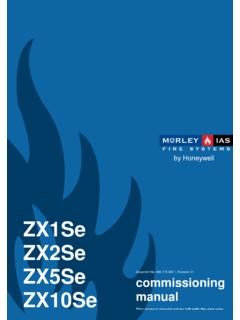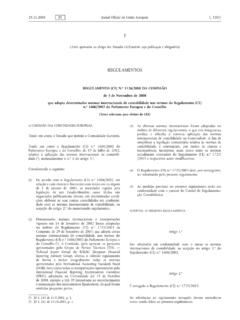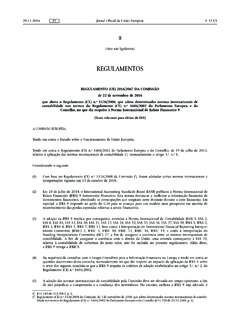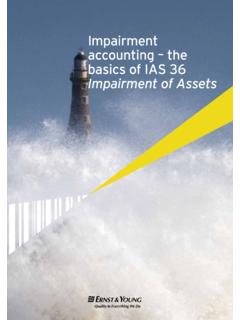Transcription of INDIAN ACCOUNTING STANDARDS (IND AS)
1 INDIAN ACCOUNTING STANDARDS ( ind as )Titre de la pr sentation1 AGENDAS tepping into Ind ASKey Implementation ChallengesClarifications provided by ITFGL earning from global peers01 STEPPING INTO IND ASDateTitre de la pr sentationIND AS VS. IFRSIAS/IFRST itle Ind ASIAS 1 Presentation of Financial Statement1 IAS 2 Inventories2 IAS 7 Statement of Cash Flows7 IAS 8 ACCOUNTING Policies, Changes in ACCOUNTING Estimates and Errors8 IAS 10 Events after the Reporting Period10 IAS 11 Construction Contracts11 IAS 12 Income Taxes12 IAS 16 Property, Plant and Equipment16 IAS 17 Leases17 IAS 18 Revenue18 IAS 19 Employees Benefits 19 IAS 20 ACCOUNTING for Governments Grants and disclosure of Government Assistance20 IAS 21 The Effects if Changes in Foreign Exchange Rates21 IAS 23 Borrowing Costs23 IAS 24 Related Party Disclosures24 IAS 27 Separate Financial Statements27 IAS 28 Investments in Associates and Joint Ventures28 IAS 29 Financial Reporting in Hyperinflationary Economics29 IAS 32 Financial Instruments: Presentation32 IAS 33 Earnings Per Share33 ind as VS.
2 IFRSIAS/IFRST itle Ind ASIAS 34 Interim Financial Reporting34 ias 36 Impairment of Assets36 IAS 37 Provisions, Contingent Liabilities and Contingent Assets37 IAS 38 Intangible Assets38 IAS 40 Investment Property40 IAS 41 Agriculture41 IFRS 1 First-time adoption of INDIAN ACCOUNTING Standards101 IFRS 2 Share-Based Payments102 IFRS 3 Business Combinations103 IFRS 4 Insurance Contracts104 IFRS 5 Non-Current Assets Held for Sale and DiscontiunuedOperations105 IFRS 6 Exploration for and Evaluation of Mineral Resources106 IFRS 7 Financial Instruments: Disclosures107 IFRS 8 Operating Segments108 IFRS 9 Financial Instruments109 IFRS 10 Consolidated Financial Statements110 IFRS 11 Joint Arrangements111 IFRS 12 Disclosure of Interests in Other Entities112 IFRS 13 Fair Value Measurement113 IFRS 14 Regulatory Deferral Accounts1145 ind as VS. IFRSNote-1 ind as 11 and ind as 18 were replaced by ind as 115, on issue of ind as Rules, 2015 by MCA.
3 However, in view of the future applicability of IFRS 15, MCA has recently deferred ind as 115. Consequently, ind as 11 and 18 are revived in the intervening period. Note-2 Though IFRS 9 would apply to an annual reporting periods beginning on or after 1 January 2018; however ind as 109 is applicable earlier to it. PRESENTATION OF FINANCIAL STATEMENTS ( ind as 1)Format Format not prescribed Prescribescomponentsof FS,minimum disclosure requirementson theface of the balance sheet, statement of profit and loss and statement ofchanges in equity. Requiresadditional line items, headings and subtotalsto be presented inthe FS to enhance understanding of the financial position. MD&A, other reports presented by management along with the FS, areoutsidescope of IndASs Sch III(R) prescribes the format for presentation of FSPRESENTATION OF FINANCIAL STATEMENTS ( ind as 1)A complete set of financial statements comprises: a balance sheet as at the end of the period; a statement of profit and loss for the period; statement of changes in equity for the period; a statement of cash flows for the period; notes, comprising a summary of significant ACCOUNTING policies and other explanatory information; comparative information; and balance sheet as at the beginning of the preceding period when an entity: - applies an ACCOUNTING policy retrospectively; or - makes a retrospective restatement of items in its financial statements.
4 Or - when it reclassifies items in its financial statementsIND AS FINANCIAL STATEMENTS- BALANCE SHEETIND AS FINANCIAL STATEMENTS-BALANCE SHEETIND AS FINANCIAL STATEMENTS- STATEMENT OF PROFIT AND LOSS The statement of profit and loss shall present:(a) profit or loss; (b) total other comprehensive income; (c) Total comprehensive income for the period, being the total of (a) and (b)The sections (a) and (b) shall further be disclosed as attributable to: non-controlling interests (minority interest), and owners of the parent. OCIcomprises items of income and expense (including reclassification adjustments) that are not recognised in profit or loss as required or permitted by other Ind ASs. Total comprehensive incomeis the change in equity during a period resulting from transactions and other events, other than those changes resulting from transactions with owners in their capacity as owners. ind as FINANCIAL STATEMENTS- STATEMENT OF PROFIT AND LOSS OCI Include Changes in revaluation surplus Re-measurements of defined benefit plans Gains and losses arising from translating the financial statements of a foreign operation Gains and losses on financial assets measured at fair value through OCIThe items of OCI shall be grouped into the following: will not be reclassified subsequently to profit or loss (together with tax impact); and will be reclassified subsequently to profit or loss (together with tax impact).
5 ind as FINANCIAL STATEMENTS- STATEMENT OF PROFIT AND LOSS ind as FINANCIAL STATEMENTS- STATEMENT OF PROFIT AND LOSS ind as FINANCIAL STATEMENTS- STATEMENT OF PROFIT AND LOSS ind as FINANCIAL STATEMENTS- STATEMENT OF CHANGE IN EQUITY Information to be presented on the face of the statement of changes in equity For each component of equity, a reconciliation between the carrying amount at the beginning and the end of the period separately disclosing each change. Total comprehensive income for the period, showing separately the total amounts attributable to owners of the parent and to minority interest; Transactions with owners showing separately contributions by and distributions to ownersIND AS FINANCIAL STATEMENTS- STATEMENT OF CHANGE IN EQUITY FIRST TIME ADOPTION OF IND ASPrimary objectives: Consistent starting point for ind as Specific requirements and detailed disclosures Clearly convey to financial statement users the impact of converting from INDIAN GAAP to Ind ASUse of Ind-ASA company is required to use Ind-AS for the following: First Ind-AS compliant FS.
6 And Each interim financial report for part of the period covered by its first Ind-AS FSAn entity s first ind as FS are the first annual FS in which the entity adopts Ind ASs, in accordance with Ind ASs notified under the Companies Act, 2013 and makes an explicit and unreserved statement in those FS of compliance with Ind TIME ADOPTION OF IND ASInd AS 101- provides guidance on first-time application of ind as Generally retrospective application of all Ind ASs effective at the end offirstInd AS reporting period (although some voluntary and mandatory exceptions) Requires one year of comparative financial information Transition adjustmentsrecognised in retained earnings Disclosures and reconciliation to INDIAN GAAP to explain effect of transition to Ind ASTransitional date Starting point for ind as Is the beginning of the earliest period for which an entity presents full comparativeinformation under ind as in its first ind as financial statementsFIRST TIME ADOPTION OF IND ASComponents of first ind as financial statementsThe first ind as FS shall include at least: Three Balance Sheets Two Statements of Profit and Loss Two Statements of cash flows Two Statements of changes in equity Related notes including summary of ACCOUNTING policies and other explanatory informationPhase-I companies shall prepare: Opening ind as -BS at 1 April 2015; BS for 31 March 2017 (with comparatives for the year ended 31 March 2016).
7 Statement of profit and loss, SOCE and statement of cash flows for the year to 31 March 2017 (with comparatives for the year ended 31 March 2016); and Disclosures (including comparative information for the year ended 31 March 2016).FIRST TIME ADOPTION OF IND ASExemptions provided by Ind-AS 101 Two types of exemptions- mandatory or voluntary exemptions. In case a company is not eligible for these exemptions, then all applicable Ind ASs are to be applied exemptions- Mandatory Estimates Hedge ACCOUNTING Impairment of financial assets Classification and measurement of financial assets De-recognition of financial instruments Non-controlling interests Embedded derivatives Government loanFIRST TIME ADOPTION OF IND ASKey exemptions- Optional Business combinations Non-current assets held for sale and discontinued operations Long term foreign currency monetary items Leases Deemed cost Share-based payment transactionsPresentation and DisclosureNo exemption from the presentation and disclosure requirements of other IMPLEMENTATION CHALLENGESDateTitre de la pr sentationKEY CHALLENGES ON TRANSITION Impacts of ind as conversion to be addressed withall stakeholders Fair value conceptto beembeddedin the Company s businessprocesses New standardissued without international precedence Use of
8 Morejudgmentin selection of ACCOUNTING policies Incremental disclosures ind as compliance not equal to IFRS compliance Alignmentwith various legislations Emphasis on substance over form Complete review and modificationto contracts containing financial covenants FOCUS AREASF inancial reporting factors ACCOUNTING PracticesDifferences resulting from these changes are timely identified and corresponding new ACCOUNTING policies and practices are developed. Tax implications Significant tax implications on adoption of ind as , given the current tax structure we have in India. Group policiesDue to the geography of the group and its members it is obvious to have differences in ACCOUNTING policies. The Industry peersThe ACCOUNTING practices adopted by the industry peers will have significant bearing on any company, while choosing its own set of ACCOUNTING policies. Management strategiesThe conversion would momentously impact the way the management strategies are being formed and how the decision making and financial communication model works.
9 FOCUS AREASNon-financial reporting factors Company personnelCos needs to create a project team and work streams, set timescales and accountabilities. Training needsCos. needs to develop & execute training programmes for employees, including KPMs across functions & locations. IT system Need to be modified to meet the revised needs to the current financial reporting systems and the desired reports. Human resources system This conversion process will surely impact other systems like human resources systems. FOCUS AREASNon-financial reporting factors Treasury and finance functionWith the revised ratios and other statistics, the treasury or finance department is most likely to be impacted, having the responsibility for managing sources of financing of the entity. Stakeholder expectationsCos. to ensure stakeholder s expectations in a satisfactory and timely AS PROVIDED BY ITFG DateTitre de la pr sentation03 AAPPLICABILITY OF ROADMAP DateTitre de la pr sentationAPPLICABILITY OF IND ASIssue : Compliance of ind as by Cos.
10 With negative NWWill the following Co. need to comply with IndAS: Co. A (listed) having negative NW of Rs 600 Cr. Co. B (unlisted) having negative NW of Rs 300 : Co. A s NW is negative and < 500 Cr. Therefore, will not fall in Phase I. (Being listed Co., it would fall in Phase II) Co. A s NW is negative and < 500 Cr. Therefore, will not fall in Phase I & II. Being unlisted Co., IndAS will not be applicable on Co. B, unless it meets the NW criteria subsequently or ind as becomes applicable as part of the group or it voluntarily applies IndASAPPLICABILITY OF IND ASIssue : Applicability of ind as , due to change in NW subsequently Co. X had NW been 250- 500 Cr. as at March 2014 and March 2015 and is expected to exceed Rs 500 Cr. in FY 2015-16. Will Co. X fall within Phase II or Phase I ?Response:Per ind as Rules, 2015- The NW of the Co. shall be per standalone FS as on 31 March 2014 or as per first audited FS after that date For Co.
